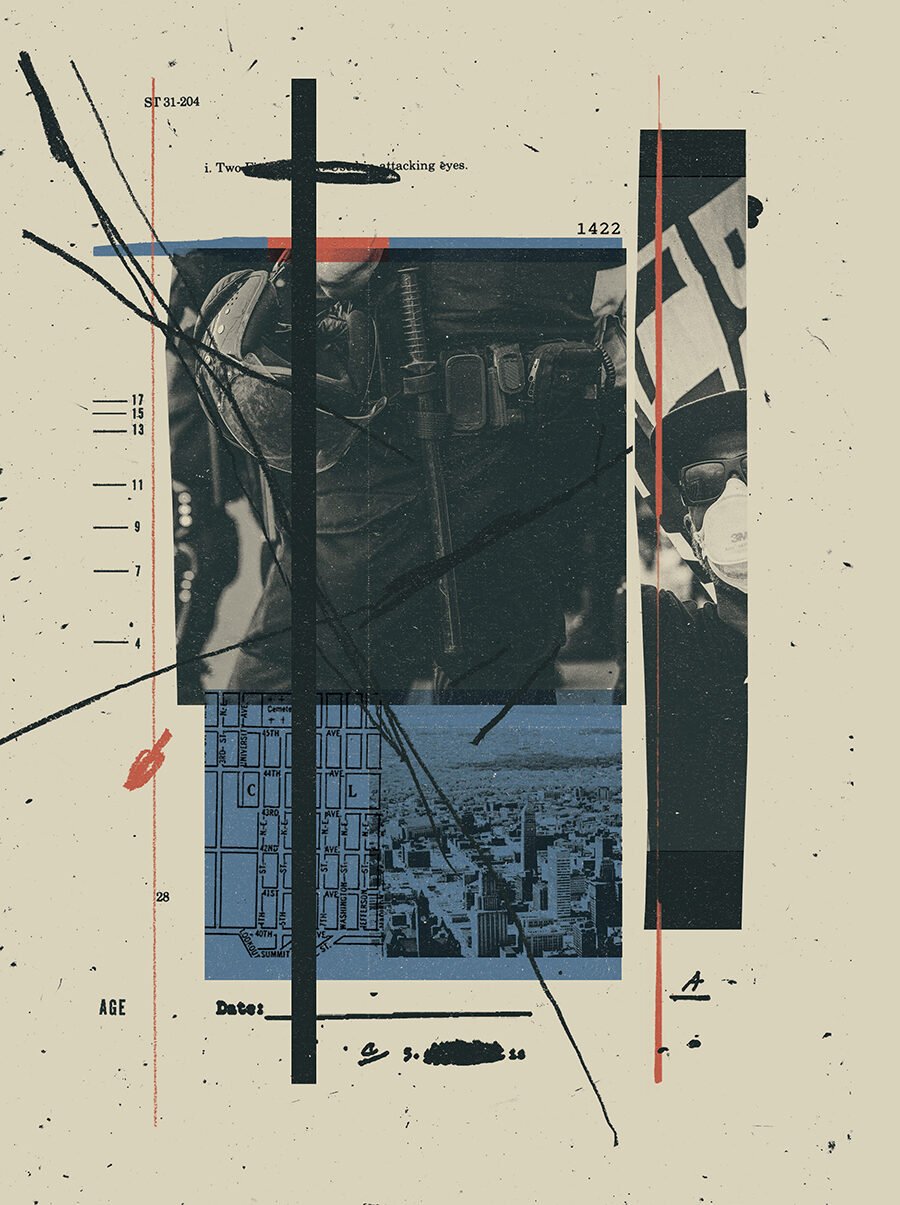
Collages by Mike McQuade. Source images: Police officers in combat uniform © Kostya Pazyuk/Alamy; Black Lives Matter protester © Edwin Remsberg/Alamy; Minneapolis © Superstock/Alamy
In May 2020, the Minneapolis police officer Derek Chauvin’s murder of George Floyd sparked the largest wave of civil unrest in U.S. history. An estimated twenty-three million people took to the streets, calling for the reformation, defunding, disarming, or even abolition of police departments. Protesters pointed to policing’s disproportionate targeting of black and brown communities, its role in creating the world’s largest carceral state, and its increasing reliance on military weapons and tactics. Defenders of law enforcement countered that a militarized police force is necessary to regulating the most heavily armed civilian population on earth. These defenders claimed that racism…


